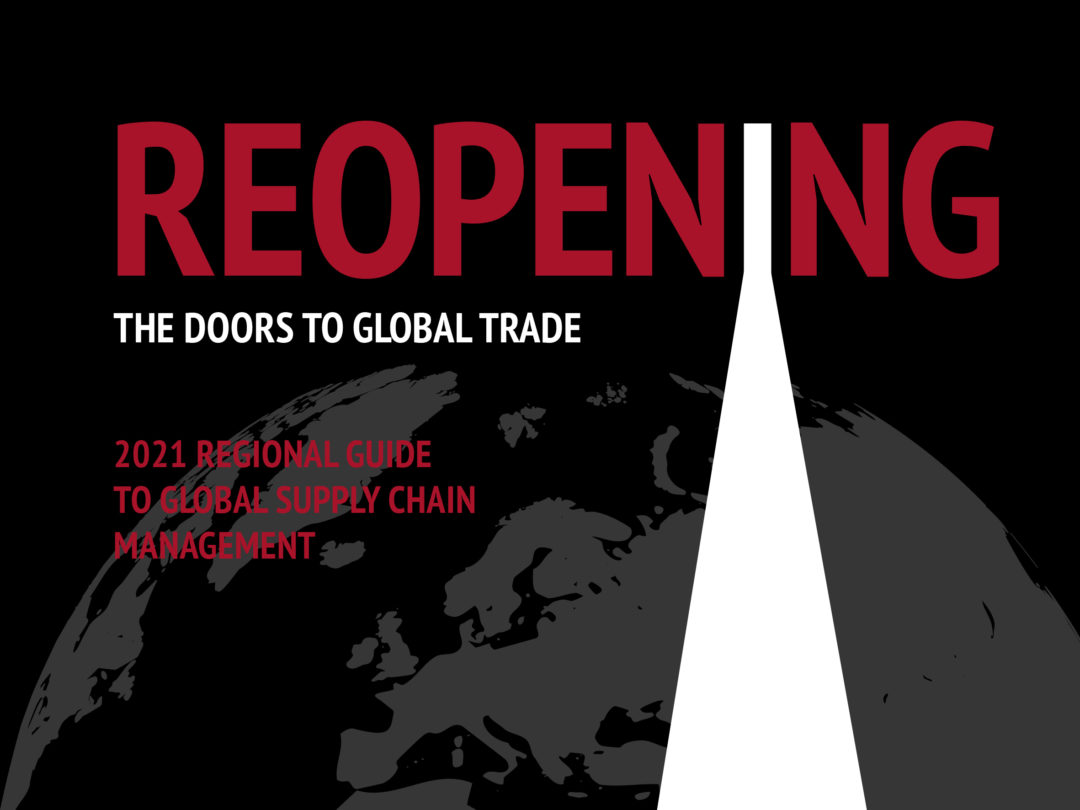
Visit Our Sponsors |
|
|
|
|
|
|
|
|
|
|
|
|
|
|
|
|
|
|
|
|
|
|
|
|
|
|
|
|
|
|
|
|
|
|
|
|
|
|

For the last year and half, many of us have had to view other regions of the world from afar. The coronavirus pandemic has shut down most opportunities for travel, even as trade in goods limps along. That has made it tougher for supply-chain managers to keep tabs on critical suppliers, and ensure the steady flow of components and finished goods from sources all over the globe.
At times during the pandemic, that “steady flow” has come to an abrupt halt. In the early stages of the virus’s progress, factories were forced to shutter operations, leaving retailers and distributors to scramble for product (and wish they’d salted away more buffer stock to cope with such disruptions). Even when production resumed, supply was far from assured, as consumers raided store shelves in spurts of panic buying, and items essential to battling the virus became unavailable.
In a sense, the pandemic left us temporarily blind to conditions and developments outside our immediate borders. But did we fully understand the subtleties of regional differences even before the virus struck? Americans in particular tend to have a blinkered view of other countries and cultures, but global traders can’t afford that state of ignorance. Visibility and understanding are essential qualities of an efficient supply chain.
With that ironclad rule in mind, we present our third annual Regional Guide to Global Supply Chain Management. Our intent is to shine a light on selected parts of the world, in hopes of better understanding how they make up a coherent global trading system. Only then can we ensure the free flow of goods across borders.
Some of the themes addressed here are familiar ones: the continued growth of e-commerce, and the need to apply cutting-edge technology to cope with the flood of data generated by the internet of things and social media. Other concerns are more recent, most notably the severe disruptions in global commerce caused by the pandemic. How were various regions affected? What were the factors affecting supply? And how can we mitigate the impact of future crises?
So much remains in a state of flux. We don’t know when the pandemic will finally subside, or when the U.S. and global economy will fully recover. The long-term impact of the Biden Administration’s trade policy, especially toward China, remains unclear, as do the implications of China’s growing power as a geopolitical force. The fallout from Brexit is far from complete. The European Union continues to grapple with the challenge of unifying nations that are so different in character. Questions remain about the ability of manufacturers to shift production from China to the western hemisphere, let alone the U.S. We’ve yet to tap the full potential of the U.S.-Mexico-Canada Agreement. And where do companies stand today in their efforts to promote sustainability and human rights throughout their global supply chains? Can they achieve those goals while generating adequate returns for their shareholders?
We can only hope that over the coming months we’ll see the doors of commerce swing wide once more, and global trade rebound. But don’t count on any of the above-mentioned challenges disappearing anytime soon. For supply-chain managers, there will always be obstacles to surmount, and to do that they’ll need a thorough understanding of what the world’s regions have in common — and how they’re uniquely different.
—Bob Bowman is editor-in-chief of SupplyChainBrain
Read the 2021 Regional Guide to Global Supply Chain Management here.
RELATED CONTENT
RELATED VIDEOS
Timely, incisive articles delivered directly to your inbox.

